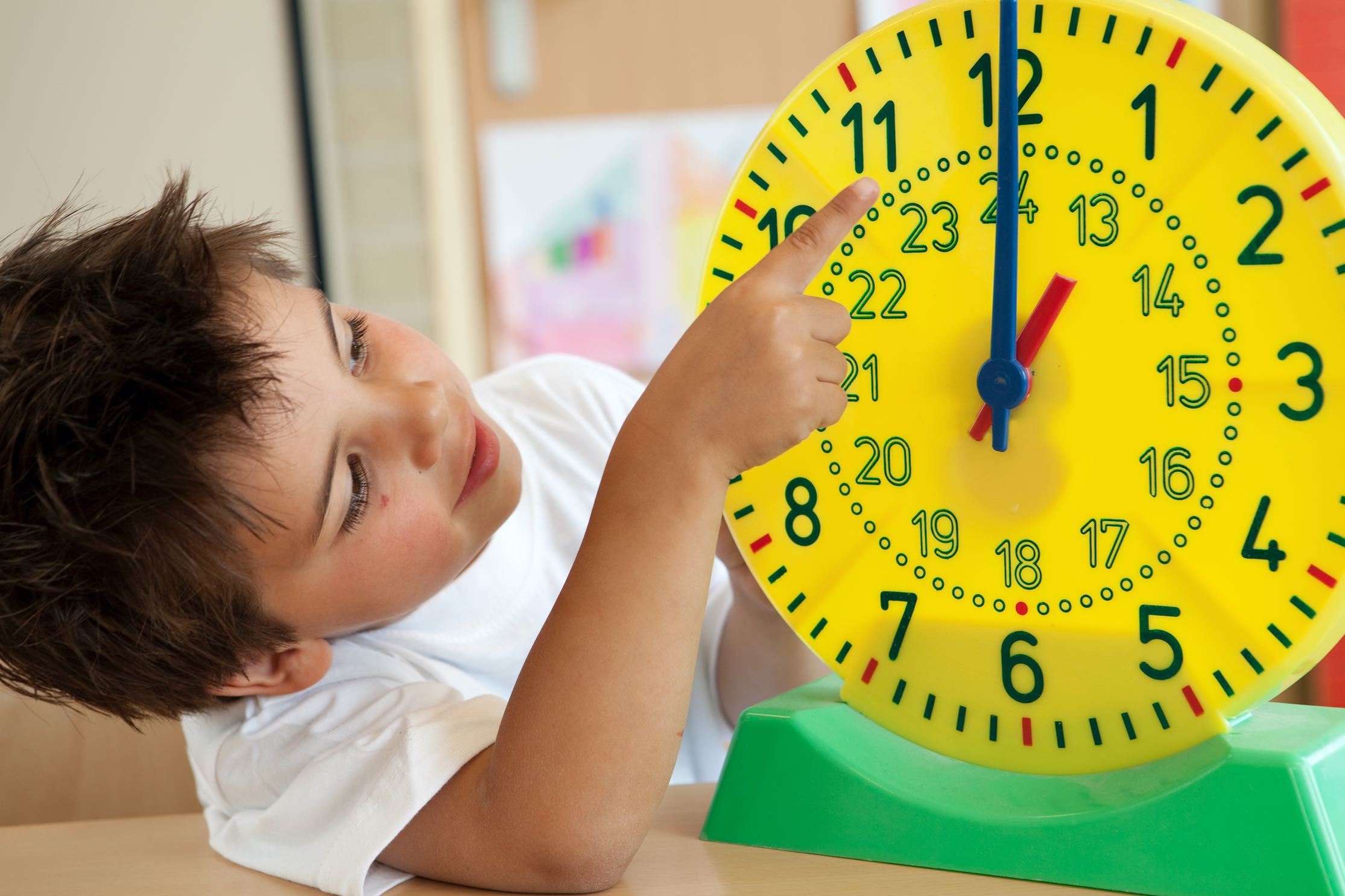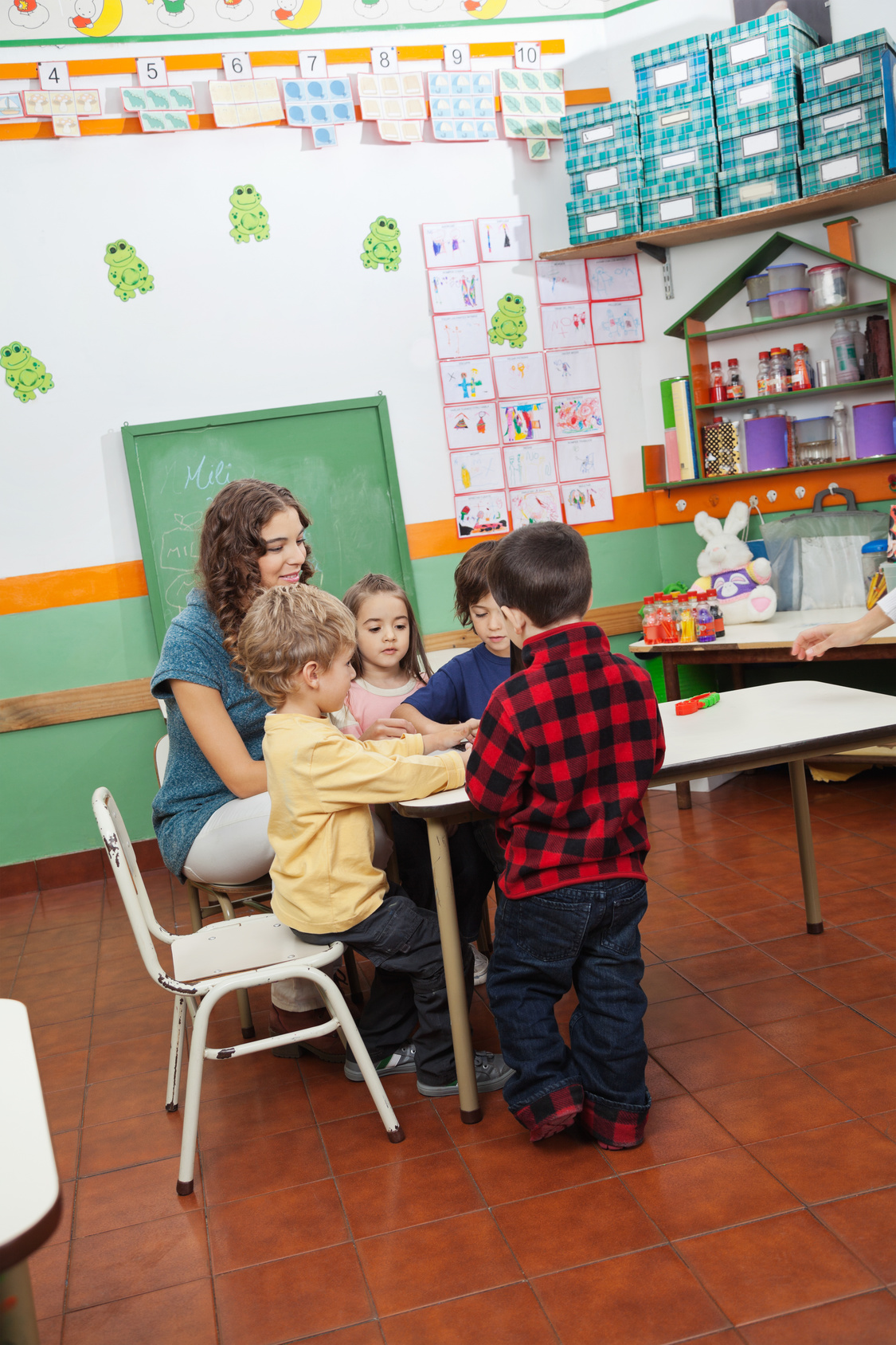Another story about Teachers Angela and Patrick. Here, they observe the children in their classroom and notice them using time and time tools throughout their day.
Teachers Angela and Patrick had spent part of the summer revamping the curriculum for their preschool students. As the year started, they had paid close attention to what seemed to be working and useful—and what didn’t. As noted in the "To Calendar or Not To Calendar" Vignette, many of the development and learning goals they thought they were achieving around time weren’t being met through their traditional calendar circle time activity. A few weeks after examining their calendar time activities, Angela  was watching the children at the math center play with the pretend clock, moving the plastic hands around the clock face. The children didn’t talk about time, they just seemed to enjoy spinning the hands around and around. There were some two-piece time puzzles too, which had one piece of the puzzle showing a time in numerals (like 11:00) and the matching piece showing a picture of a clock with the big hand on the 12 and the little hand on the 11. Children were playing with these too, but because each time puzzle piece only fit with one clock puzzle piece, the children didn’t need to match the times, only the shape of the interlocking knobs and holes.
was watching the children at the math center play with the pretend clock, moving the plastic hands around the clock face. The children didn’t talk about time, they just seemed to enjoy spinning the hands around and around. There were some two-piece time puzzles too, which had one piece of the puzzle showing a time in numerals (like 11:00) and the matching piece showing a picture of a clock with the big hand on the 12 and the little hand on the 11. Children were playing with these too, but because each time puzzle piece only fit with one clock puzzle piece, the children didn’t need to match the times, only the shape of the interlocking knobs and holes.
Angela pulled Patrick over and asked, “Do you think this is like the calendar activity? We think they are learning a lot of concepts, but are they really?” Patrick replied, “Well, when we spend time at the center, I think they learn more, and I have heard a few of the children say ‘I need an eleven clock piece’ when they have the numeral 11 puzzle piece. But, now that you mention it, I’m not sure that they connect that with anything in the real world. And, I think most watches and phones use digital times. But those are really hard too, what would they think if they saw 12:56? What could that possibly mean to them?”
Angela sighed. “Why does time have to be so complicated! Okay, I think we need to look at this just like we looked at the calendar activities.” Over the next several weeks, they took notes on how children used time in the classroom. Here is a partial list of what they saw:
- Children seemed to use an internal timer when taking turns (usually revealed when another child had played with a toy too long, according to their internal timer).
- Children used the wind-up timer to take turns (usually five minutes).
- Children used the hourglass sand timer to take turns (which lasted ten minutes).
- Children asked teachers to keep track of time for turns.
- Children had conversations with parents and teachers about what time they would be picked up.
- Teachers called out five- and two-minute warnings before changing activities.
- Children counted to ten during hide-and-seek games. (Patrick wasn’t convinced this was actually a time-related activity.)
- Children looked at the illustrated schedule when they were arguing about what came next.
- Patrick and Angela used the illustrated schedule to support new children’s sense of stability and structure (and show that Daddy really will come at the end of the day).
- Children talked about the schedule based on daylight. (“It’s dark, Mommy’s coming soon!”)
- Children never once used the analog clock on the wall (for anything!) though the teachers would occasionally use it to show when parents were arriving (“When the big hand is pointing at the bottom, Noni will come and pick you up.”).
- As well as Angela and Patrick, children and parents referenced times of the day (“I’ll be back at five to get you.”)—usually when talking about lunch or pick-up times.
Aha! Time was being used in the classroom! And, it was being used in real time to solve real world problems. Patrick also investigated the research on teaching time and found out that first- and second grade were more appropriate ages for teaching formal time concepts. That confirmed Angela’s and Patrick’s feeling that formally teaching time through the use of pretend clocks and puzzles was not achieving their goals. It seemed enough for children to know that clocks and watches and mobile phones can serve as tools to measure time. They also believed that children understood and used time in the classroom as a problem-solving tool, in particular with regard to turn-taking. Children rarely argued about turns, but instead talked about using time and timers to solve turn-taking problems. This, in turn (and time) improved their negotiating skills.
So Patrick and Angela decided that the answer to whether children were learning about time was two-fold. Children were learning informally about the use of watches and clocks in the world. But more importantly, they were using time and time tools (like timers) to solve important problems in the classroom and to understand the structure of their lives.



